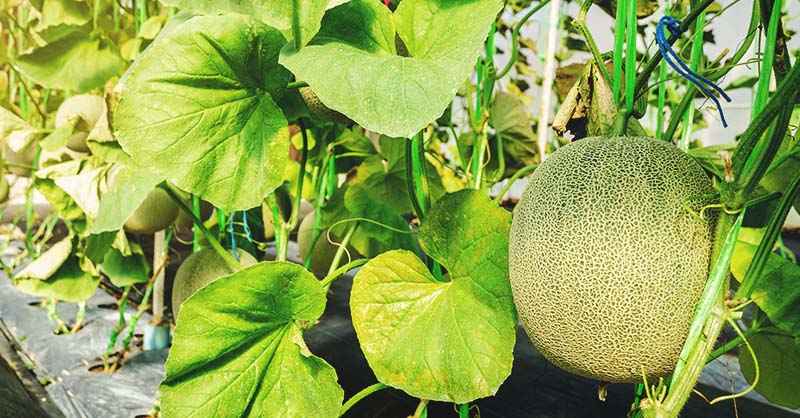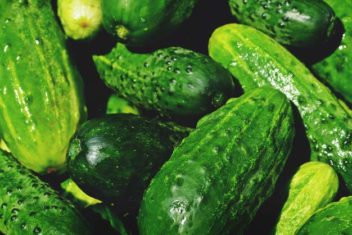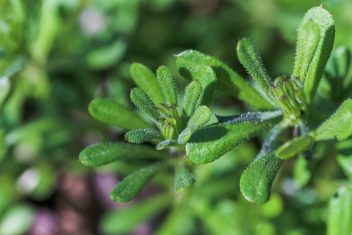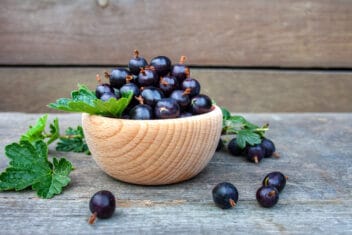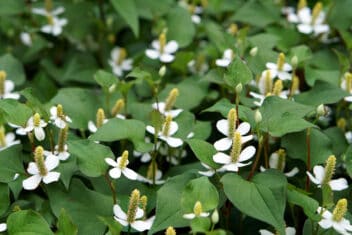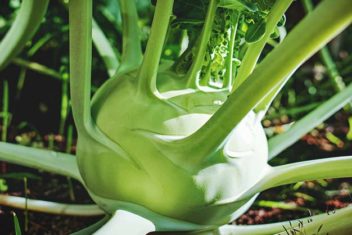I still remember the first time I tried growing cantaloupe. I selected a dwarf type because of the shorter maturation period and my compact growing space. Since I was eager to try my hand at some kind of fruit, melon seemed like a fun choice. That summer, I managed to grow a single melon. I was so excited to nurture it and even more excited to eventually pick and eat it, but my plans were thwarted by a very rude squirrel.
The day I had planned to pick it, I grabbed my cantaloupe from its resting place and started to bring it into the kitchen to slice up but low and behold, the melon had been massacred. I knew who had done it and I screamed into the sky at the squirrels I knew were watching.
I believe that that melon would have been delicious. The fragrance emanating from the exposed flesh was intoxicating. Intensely fruity, almost so much so that it smelled like a perfume. After that summer, I stopped growing a few crops that seemed to attract the squirrels, but I think about that lonely melon a lot because a home-grown melon is truly something else.
If you’re lucky and live in the right climate with long, warm summers, growing cantaloupe shouldn’t be too tricky. Still, this crop may pose a challenge even for intermediate gardeners. Here’s what you need to know to be successful.
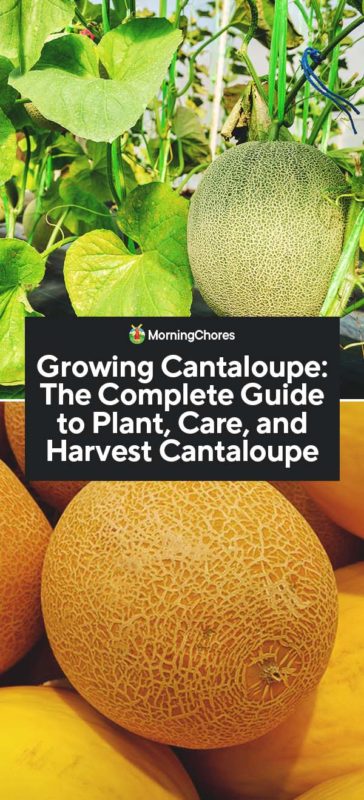
Cantaloupe Varieties
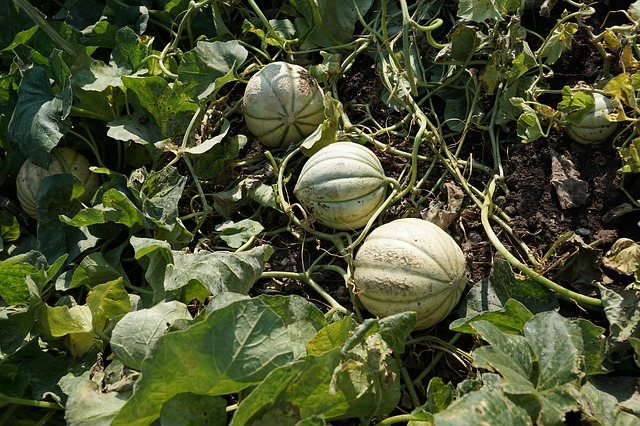
- Bush Star: Ideal for growing cantaloupe in containers or in small spaces. It matures in approximately 90 days.
- Ambrosia: One of the sweetest cantaloupe varieties.
- Minnesota Midget: This is the variety I grew, and if it hadn’t been for those pesky squirrels, it would have been well worth the effort. This variety matures in about 75 days, which is quick for melon. The fruits are small and extremely sweet. It’s an excellent variety for northern climates like mine.
- Sugar cube: Produces smallish cantaloupes with deep orange flesh and dense netting on the rind.
- Tasty Bites: An adorable mini cantaloupe variety that produces round or oval fruits weighing at most 2.5 lbs.
Planting Cantaloupe
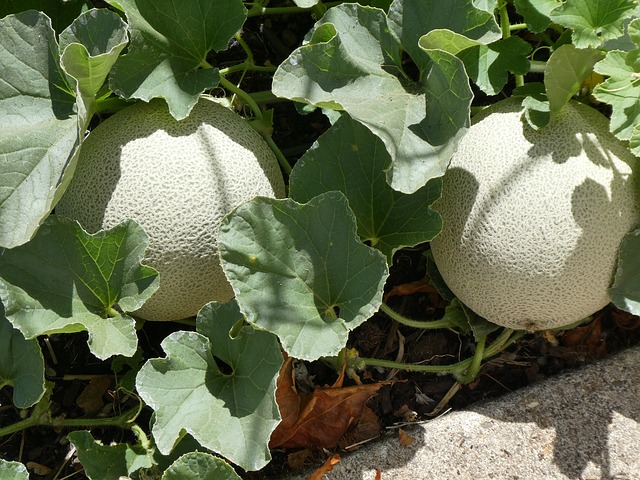
Sun Requirements
These plants are sun lovers, so be sure to pick a well-lit spot in full sun to grow them.
Soil Requirements
Soil should be neutral or slightly acidic, with a pH between 6.0-7.0, and it’s better if it’s on the sandy side. Add compost to your planting hole before transplanting or seeding cantaloupe.
This type of melon is typically grown in mounds or hills. Why? This method of planting prevents water from pooling in one location and rotting the roots of the plant. The mounds also help retain heat, which melons love.
Growing Zones
Cantaloupe will grow in zones 4-11, with a bit of extra care and attention required in colder zones, since fruit flavor depends mostly on watering and warm temperatures.
Planting Seeds
In warmer zones, cantaloupe seeds can be direct sown in the early spring, but if you’re in a colder climate, you’ll want to start them indoors prior to transplanting to give the plants a head start. Melons are similar to squash and should go out well after the last frost date. Start them about a month before you plan to put them out in the garden. Any exposure to frost will likely decimate your melon crop, so don’t transplant until all risk has passed.
If direct-seeding, ensure the soil is warm enough to encourage germination. Planting in cool soil may lead to poor germination. Plant seeds about 1/2 inch deep.
Allow transplants 7-10 days to harden off before putting them in the garden.
Spacing
Space your mounds to give your plants enough room to spread and grow. Keep plants about 3 feet apart. Cantaloupes are vining plants and need room to spread, but they can also be grown vertically to save on ground room.
It’s also possible to succeed at growing cantaloupe in containers. Vines will sprawl out, though, so opt for a trellis or support structure to keep everything tidy and contained.
Caring for Your Cantaloupe Plants
Here are a few tips for caring for your cantaloupe crops:
Watering
Water regularly until you start to notice flowers turning into melons. Cantaloupes need plenty of water to set fruit. Once you see actual melons beginning to grow, cut back on watering. Water too much while your melons grow and you’ll likely get bland-tasting fruit.
Weeding
Black plastic mulch keeps weeds from growing and gives the melons extra heat.
Mulching
These plants love the heat and need a lot of it to grow into tasty melons. Use black plastic mulch to conserve heat and moisture. Plastic mulch is also ideal if you’re allowing your plants to sprawl on the ground since the plastic will keep the fruit from touching the earth and potentially contracting a disease.
Fertilizing
Provide a balanced fertilizer once your plants start sending out vines.
Problems and Solutions to Growing Cantaloupe
Fusarium wilt
This wilting disease will eventually kill off your cantaloupe plants. Prevent it by keeping pests like cucumber beetles away from your plants since they transmit this disease.
Cucurbit Yellow Stunting Disorder
This disease is caused by a virus that is transmitted by whitefly. You’ll notice mottling leaves that eventually curl and become brittle. Keep whitefly away to avoid this disease.
Cucumber Green Mottle Mosaic
This disease shows up as mottling on the leaves and stunted growth. There’s no cure, and it is spread by infected tools or in seed, so be sure to clean your equipment between use. Use only certified clean seed.
Fusarium Wilt
This fungus causes lesions on roots and stems, along with yellowing of runners. Use fungicide and plant in well-drained soils.
Powdery Mildew
Powdery mildew stunts plant growth and causes white powdery growth on plant leaves and stems. Sanitize your equipment between use and make sure plants have plenty of air circulation.
Verticillium Wilt
Mature plants develop necrotic spots, discoloration and will eventually collapse if they contract this disease. It likes cool temps so plant when the days have warmed up a bit.
Aster Yellows
This disease causes foliage to turn yellow and become stunted and distorted. It’s transmitted by leafhoppers, so use row covers and keep weeds away to prevent them from attacking plants.
Bacterial Wilt
Bacterial wilt will cause leaves and stems to turn dark green and then wilt. It’s spread by bugs, so keep them away.
Anthracnose
Anthracnose causes pink spores to form on cantaloupe leaves. Rotate your crops and use disease-free seed.
Charcoal Rot
Charcoal rot causes yellow leaves and an oozing, gummy substance at the stem. It’s caused by a fungus. Rotate crops and keep plants well watered.
Aphids
Aphids are nasty, sap-sucking insects that are tiny and not noticeable until there’s an infestation. Keep an eye on the undersides of your melon leaves for these annoying insect pests. Spray with homemade insecticide or neem oil.
Squash Vine Borer
Besides cabbage moths and caterpillars, squash vine borers are my number one garden nemesis. They bore into vines and eventually kill your healthy plants by eating them from the inside. It’s a real horror show. Keep close watch of your plants to spot eggs on undersides of leaves. Quickly dispose of infected plants to prevent the spread of this pest.
Cucumber beetles
These striped beetles target plants in the cucurbit family, including melons. They munch on foliage and can spread disease. Thankfully, they’re relatively easy to spot because of their coloring. Unless you’re experiencing a heavy infestation, they should be easy to pick off and squish or drown in a bucket of soapy water.
Cabbage Looper
Cabbage loopers chew holes in leaves and can decimate a plant. You’ll recognize the caterpillar by its inching motion. Hand pick them from plants or use a good insecticide.
Cutworms
Cutworms gnaw through growing cantaloupe plants at the base by the soil. Keep the ground around plants clear, use collars to protect plants, and spread diatomaceous earth around plants.
Flea Beetles
Flea beetles chew shot holes through plant leaves and can be so damaging that they can kill plants. Use floating row covers and trap crops, along with a layer of mulch to keep them under control.
Root Knot Nematode
Cantaloupe is attacked by several types of root-knot nematodes. Plants wilt in the heat of the day, and you’ll see galls on the roots of the plants. Use nematicidal fumigants to control.
Problems
Here are a few problems you may encounter while growing cantaloupe.
The leaves on my melon plant look like someone dropped powder all over them, what’s going on?
It sounds like your cantaloupe plant has contracted powdery mildew. It’s a common infection caused by a fungus. It’s not the end of the world, though. Avoid watering from above and remove affected foliage.
There’s no fruit, and it’s well into the summer, what happened?
You may need a bit more patience if your melon variety has a long maturity period. Check your seed packet to verify. Otherwise, you may have a lack of pollinators visiting your garden plants. Try planting pollinator-friendly flowers and vegetation. You may have also planted the melons too close together.
My melons taste bad! Why!?
If your melons don’t taste like much at all, it’s likely the weather that’s to blame. Too much rain will cause cantaloupe to grow into balls of bland-tasting flesh. It could also be that you’ve overwatered your plants while the fruits were growing.
My melons look weird. How come?
It’s probably irregular watering. When plants are young, make sure to water evenly and avoid drought exposure. Later, when fruits have set, water so as not to cause the plants to die, but never overwater.
Companion Planting for Cantaloupe
Best Companions
When planting cantaloupe, consider putting flowering plants nearby to attract pollinators: cantaloupe plants produce both male and female flowers and insects like bees help to pollinate and increase fruit production.
Collard greens: If you’ve historically had issues with aphids, collard greens can lure them away from your melons.
Marigolds: Their strong scent helps repel pests from a number of plants, including melon.
Herbs: Strong smelling herbs like savory, chamomile, tansy, dill, chives, cilantro, and mint will also do the trick to repel certain pests.
Lettuce and other quick-growing shade-tolerant crops: While your melon grows into its own, you can capitalize on the growing area around it and plant shallow rooted low-maintenance plants.
These plants also work well with cantaloupe:
- Onions
- Garlic
- Corn
- Nasturtium
- Radish
- Broccoli
Worst Companions
Don’t plant anything that will compete for space too close to your cantaloupe and avoid planting potatoes near cantaloupe plants.
Harvesting and Storing Cantaloupe
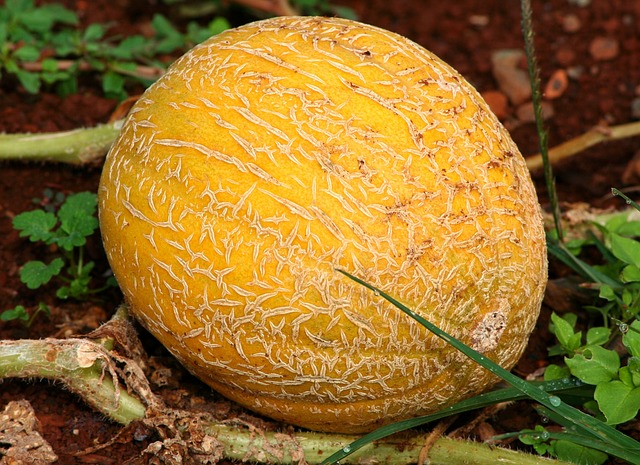
You’ll know it’s time to pick the fruit when the color of the rind changes. Yellowing signals that the plants are ripening. A ripe melon should easily dislodge from its vine. Be gentle when harvesting, piercing the flesh will cause the fruit to spoil quickly.
Picking melons at the correct time is vital since they don’t ripen sitting on the countertop. A freshly picked melon will last about a week sitting out on the counter. It’s best to cut it right before eating since cut melon spoils quicker.
Now it’s time to get growing. Let us know how it goes – and if you have any advice for keeping the hungry squirrels away, I’m all ears!

